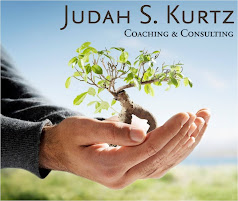 Our lives are marked by the beating of our hearts -- that persistent, forward-moving lubb-dub that coincides with the peaks and valleys of our pulse. The EKG image offers a great visual of this. When we are in action or stress, the pace accelerates. When we are calm or in a resting state, the pace is slower. But our hearts never deviate from the inevitable highs and lows of that ever-present beat.
Our lives are marked by the beating of our hearts -- that persistent, forward-moving lubb-dub that coincides with the peaks and valleys of our pulse. The EKG image offers a great visual of this. When we are in action or stress, the pace accelerates. When we are calm or in a resting state, the pace is slower. But our hearts never deviate from the inevitable highs and lows of that ever-present beat.The EKG image is an excellent metaphor for our journey through life. We feel the sharp heights of elation and the positive emotions and thoughts that accompany success and expansion; conversely we travel through the profound depths of challenge and woe. But for much of it, we are moving along a mid-point (pause, breath) with smaller blips that are a part of daily life.
We don’t control the lubb-dub of our heartbeat –- it’s involuntary and driven by our most basic part of ourselves (the primitive brain, the breath of life). Our higher-functioning mind does not think about it, nor do we want it to… we’d screw it up. In life, the highs and lows happen as a normal part of our experience. The mind again has no control over it, nor do we want it to… we’d screw it up.
You might find yourself saying: “Yeah, but I don’t want to go through all that. Isn’t the point of meditation and yoga and therapy (etc., etc., etc.) to calm ourselves and bring more balance?” To which I reply, yes and yes. Calming does not eliminate the peaks and valleys. Balance does not deny the two poles of high and low. If the goal was to rid ourselves of these points, we would not have the full breadth of experience that is fundamental to being alive -- we would flat-line. And we all know what that means: death.
What’s key is how we choose to relate to the beats of life. It is both the joy and sorrow that make our experiences so rich. And it is fundamental to our continual growth and evolution that we travel this path. Our pulse may quicken when significant life events occur in rapid succession (birth, death, change, stress), or may remain slow or relatively constant when we are practicing self-care. But, it never deviates from the inevitability represented in the EKG.
 Flat-lining is not the goal. Rather, it is to focus on shifting the line so that it travels at an incline. We must find ways to manage our thoughts and our responses to life by practicing being present more often so that we can make conscious, values-aligned choices moment-by-moment. By this, we make it possible over time to experience more exhilarating peaks and less-strenuous valleys. And we never stop feeling the richness and complexity of the gift of living full-out.
Flat-lining is not the goal. Rather, it is to focus on shifting the line so that it travels at an incline. We must find ways to manage our thoughts and our responses to life by practicing being present more often so that we can make conscious, values-aligned choices moment-by-moment. By this, we make it possible over time to experience more exhilarating peaks and less-strenuous valleys. And we never stop feeling the richness and complexity of the gift of living full-out.








